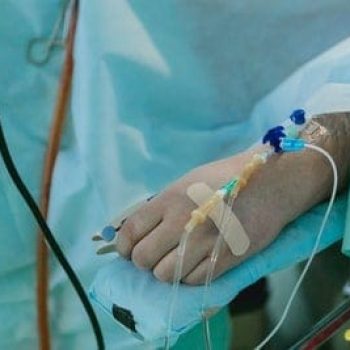

Patient Safety
How Do You Know Patient Safety Is Achieved?
SonderCare Learning Center

SonderCare Learning Center
How Do You Know Patient Safety Is Achieved? Achieving patient safety is essential to everyone – from care providers and support staff to loved ones, not to mention the patients themselves. The goal of everyone is to work towards the best possible treatment outcome and maintain or restore physical ability, mental functioning, and quality of life, or slow decline, all while the patient remains at home. But how do you know patient safety has been achieved?
Patient safety is the prevention of injury and harm to patients as they recover from or live with an illness. The aims are to prevent and reduce risks, errors, and harm to patients during their health care treatments. One hallmark of achieving this is learning from mistakes and adverse events.
It’s fundamental to delivering quality essential health services. Indeed, there is a clear consensus that quality health services across the world should be effective, safe, and people-centered. To maintain the benefits of in-home health care, medical services have to be efficient, integrated, and focused on any changes to a patient’s needs.
Successfully implementing patient safety strategies means having clear policies, the proper in-home technologies, data to drive safety improvements, and an understanding among everyone involved about the methods and goals.
A common problem holding back patient safety is a lack of communication and coordination between patients, caregivers, family, and volunteer caregivers. Every member of the care team plays an essential role in maintaining patient safety. Care can take anywhere from a couple of hours per week to 24/7 monitoring, with tasks ranging from companionship to medication reminders to assistance with dressing and bathing.
Emphasizing teamwork and being honest with all members about their role in preventing errors. It also ensures that everyone stays vigilant about noticing issues, as depending on the patient’s conditions, they may not have the ability to advocate for themselves. These include:
When these problems become apparent, it’s essential to bring them to a professional’s attention and change the care plan to meet any new needs.
Achieving patient safety means making sure the patient has everything they need to stay safe. Making adjustments before they leave the hospital – bringing in a height-adjustable bed, adding a stairlift, widening doorways, installing grab bars – will ensure they can feel secure while convalescing or ageing in place.
Monitoring technology can let healthcare professionals keep tabs on a patient, ensuring they’re following the procedures and keeping on top of their needs. Wireless technology can connect individuals to their care team from the comfort of their homes and share health information – including vital signs and monitoring of progress towards achieving health goals to support health promotion and self-management – securely.
Patients and their family members will always focus on maintaining their health. Doctors and health personnel must inform them about continuing care at home to prevent mistakes.
Professional and frontline clinical staff and organizational leaders must understand the strategies and tools to prevent risk, identify opportunities and effectively manage safety at home. Have a conversation early about any concerns you may have to address those concerns.
It doesn’t mean that patients must have the same working knowledge of their medical needs as the attending healthcare professional. However, when they or their caregivers have an intimate understanding of the treatment and the risks they face, they can go a long way.
Most patients and family members prefer the home environment – they are familiar, comforting, and `not sterile like a hospital. However, a patient’s and family’s ability to function independently and safely in the home increases the possibility of the patient remaining there.
Unless strict metrics come in from monitoring equipment, it can be hard to know when a team has achieved perfect patient safety. What matters is constant interactions, asking questions, and having what a doctor or accessibility advisor recommends in the home. When there’s a strong culture of safety, and a systematic review is performed regularly, everyone can feel comfortable about the patient’s well-being.
Whether they’re professional health care practitioners or family caregivers, safety in the home is everyone’s responsibility. It can only happen when information is openly shared and communicated without fear of negative consequences. Empowered and informed patients and caregivers are essential to ensuring safety at home.
It is important because it uses crucial and advanced safety techniques such as monitoring technology, ensures patients understand their treatment plans while checking and verifying all medical procedures. Finally, it promotes following proper sanitization procedures and promotes a team accountability and cooperation environment.
Five types of variables have developed that may influence patient safety engagement: patient-related (e.g. demographic characteristics of patients), disease-related (e.g. disease severity), health care professionals-related (e.g. expertise and attitudes of health care professionals), health care setting-related and quality of evaluations.
Start Your Patient Safety Equipment Collection With SonderCare
Are you recently discharged from hospital, experiencing mobility issues, or in need of palliative or senior care? Enjoy a smoother recovery and get the luxury you deserve by choosing our home hospital products. Contact us today to discuss home hospital beds, mattresses, stand assist chairs and other accessories to make your home hospice perfect for a truly comfortable experience.
Are you looking for the most recent articles on patient safety and medical supplies? Browse our latest resources below and let us know if you have any questions. We’re here to support you as you embark on your road to home medical care.
Seeking The Best Care For Your Loved One?
Browse North America's Luxury
Patient Safety Equipment
Inventory